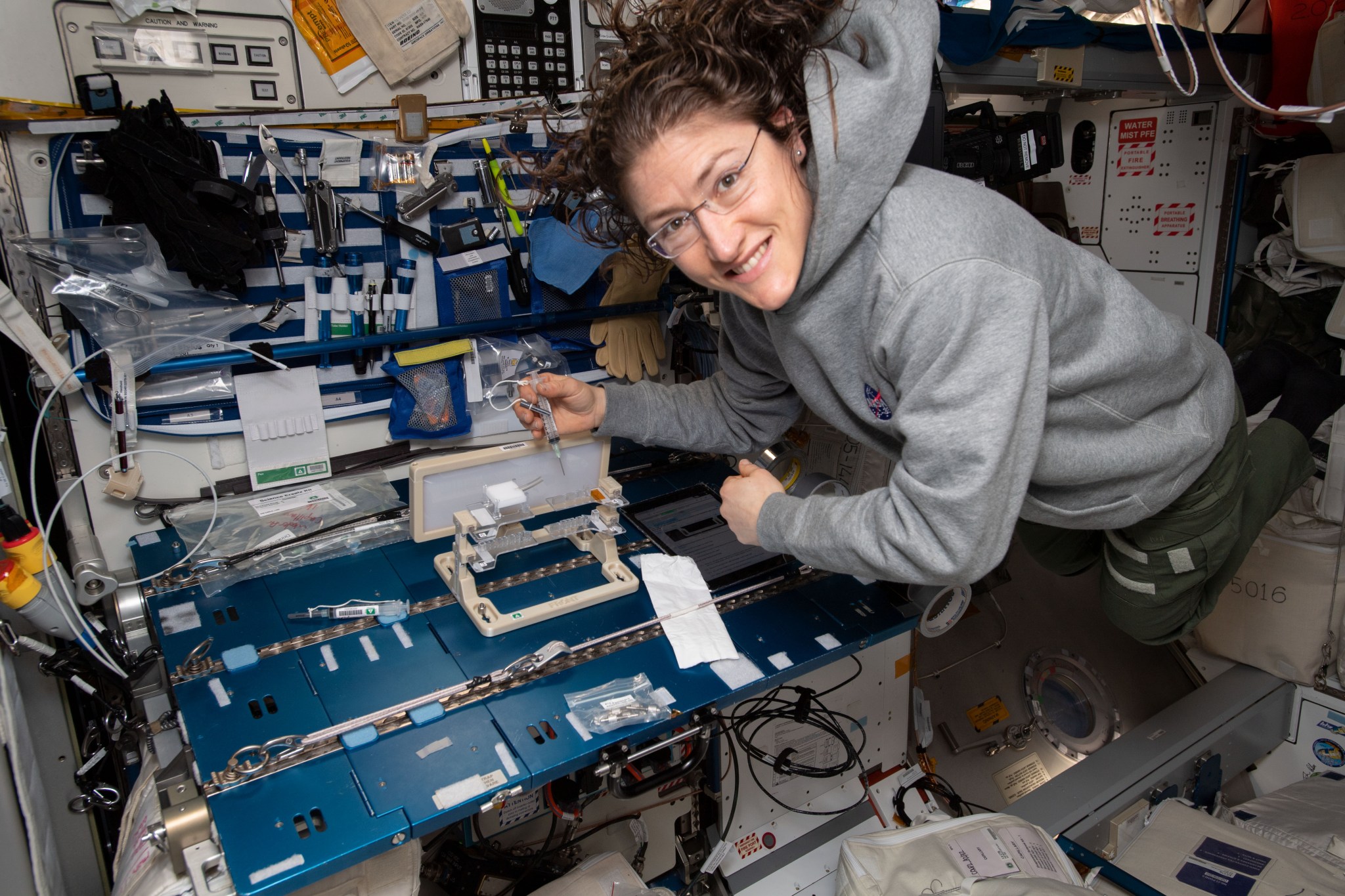NASA will host a media teleconference at 1 p.m. EDT Tuesday, July 9, to discuss select science investigations launching on the next SpaceX commercial resupply flight to the International Space Station.
Audio of the teleconference will stream live online at:
SpaceX is targeting 7:35 p.m. Sunday, July 21, for the launch of its Dragon spacecraft on a Falcon 9 rocket from Space Launch Complex 40 at Cape Canaveral Air Force Station in Florida.
Participants in the July 9 preview briefing will be:
- Bryan Dansberry, assistant program scientist for NASA’s International Space Station Program Science Office, who will share an overview of the research being conducted aboard the space station and how it benefits exploration and humanity.
- Ken Shields, chief operating officer for the International Space Station U.S. National Laboratory, who will discuss the lab’s work in advancing science in space, and in developing partnerships that drive industrialization through microgravity research.
- Charles Cockell, professor of astrobiology at the University of Edinburgh, who will discuss Biorock, an investigation that will provide insight into the physical interactions of liquid, rocks and microorganisms under microgravity conditions for potentially mining materials in space and could benefit long-duration spaceflight missions.
- Valentina Fossati from the New York Stem Foundation Research Institute and Andres Bratt-Leal from Aspen Neuroscience, who will discuss the Space Tango – Induced Stem Cells investigation, where cells from patients with Parkinson’s disease and Multiple Sclerosis will be cultured on the space station to examine cell to cell interactions that occur in neurodegenerative disease.
- Tomomichi Fujita of Hokkaido University, who will discuss Space Moss, an investigation that grows mosses aboard the space station, and on Earth, to determine how microgravity affects their growth, development, gene expression, photosynthetic activity and other features.
- Craig Everroad, a scientist at NASA’s Ames Research Center, who will discuss MVP Cell-02, an experiment that aims to understand the effects of the space environment on microbial evolutionary processes.
To participate in the teleconference, media must contact Joshua Finch at 202-358-1100 or joshua.a.finch@nasa.gov by 4 p.m. Monday, July 8, for dial-in information.
SpaceX’s Dragon spacecraft also will carry crew supplies and hardware to the orbiting laboratory to support the Expedition 60 crew for the 18th mission under NASA’s Commercial Resupply Services contract.
The space station is a convergence of science, technology and human innovation that demonstrates new technologies and enables research not possible on Earth. The orbiting laboratory has been occupied continuously since November 2000. In that time, more than 230 people, and a variety of international and commercial spacecraft, have visited the orbiting laboratory. The space station remains the springboard to NASA’s next great leap in exploration, including future missions to the Moon and eventually to Mars.
For launch countdown coverage, NASA’s launch blog, and more information about the mission, visit:
-end-
Joshua Finch
Headquarters, Washington
202-358-1100
joshua.a.finch@nasa.gov





























